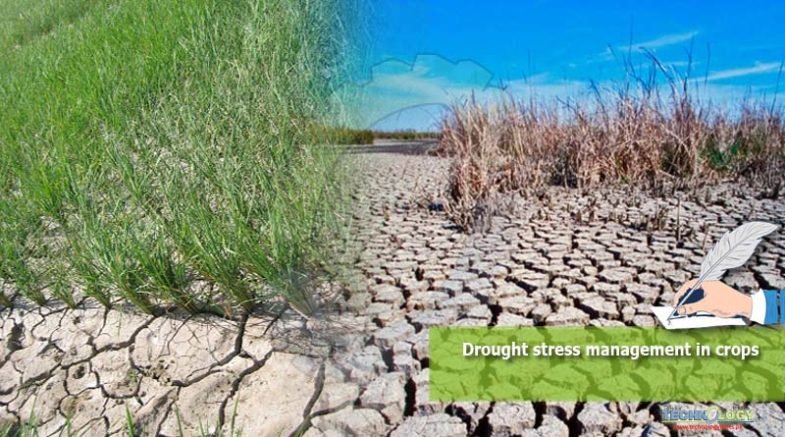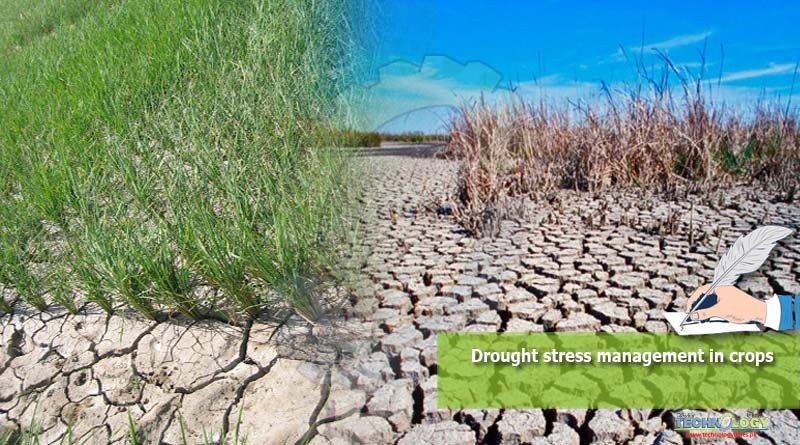Drought stress can be managed by producing the high suitable plant genotypes continuously with adjustment of agronomic practices. This is done to satisfy that sensitive crop stages take place at the time when possibility of drought is minimal.
 Different planning of major importance to perfect this aim may entail yield of suitable plant varieties and improvements of already presence varieties. Tries have been made to produce drought resistance genotypes using the information of answers of plant to drought stress. The most important planning includes:
Different planning of major importance to perfect this aim may entail yield of suitable plant varieties and improvements of already presence varieties. Tries have been made to produce drought resistance genotypes using the information of answers of plant to drought stress. The most important planning includes:
- 1-Selection of wished materials as in conventional breeding by using molecular and biotechnology means including yield of genetically alter plants.
- 2-Producing drought resistance in otherwise sensitive plants by hormones application
Selection and Breeding Planning
Traditional breeding has been foundation on experimental selection for yield. However, this reach is away from being most favorable. since production is a quantitative character and occur by a low heritability and a high genotype multiply with the environmental liaison. screening below natural drought stress situation in an environment is difficult because of random and erratic drought result. However classical breeding is a good for developing drought resistance. the developed cloning of many stress related genes and responsive elements and result of their relation with stress resistance quantitative character loci suggest that these may represent the molecular basis of drought resistance. Transgenic plants are more tolerant to water stress than the other wild type.
Induction of Drought Resistance:
We can induce drought resistance by adapting different growth regulators and chemical at different growth stages in a number of plants.
Seed Priming:
One of the short duration and most practically plan to meet the drought stress effects is seed priming. It is a technique from which seed is slightly watered to a point where related to germination processes start starts but root development does not occur. Primed seed usually display increases growth rate, greater growth uniformity and sometimes greater percentage of germination. This plan is applied to meet the drought stress effects in a varieties of crop species.
Use of Plant Growth Regulators:
Plant growth regulators are used for improving growth against a variety of abiotic stresses. Application of gibberellins increase the net photosynthesis rate and rate of transpiration in cotton. The application of 1aminocyclopropane 1carboxylic acid also improves drought tolerance by late senescence. Under drought resistance conditions plant growth regulators increases the water potential and improves the chlorophyll content.
Mulching:
Surface mulching with organic waste can expand the period of water storage in soil profile and reduces the evaporation losses of stored water. repeated cultivation between two crops in black soil results in formation of soil mulch on the surface. It act as a disruption to evaporation losses from soil. Soil mulches reduces the chances of deep cracking leading to the reduced evaporation losses.
Using of Osmo protectants:
We can use old conventional methods of plant breeding and genetics to develop variety and cultivar which have abilities to generate high levels these compounds under stresses. As a short cut method the exogenous use of these osmolytes on plant to increase their stress tolerance ability.
Authors:
Muhammad Adnan1*, Muhammad Zohaib Anjum2, Hafiz Muhammad Bilal3, Muhammad Adnan3
1.Department of Agronomy, college of agriculture, university of Sargodha
2.Department of Plant Pathology, college of agriculture, university of Sargodha
3.Department of Horticulture, college of agriculture, university of Sargodha
